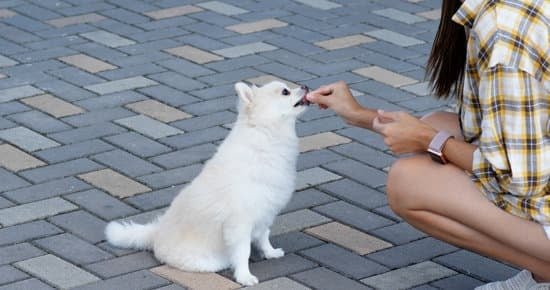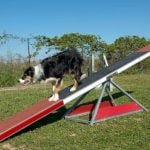Training your dog to stay in the yard is crucial for their safety and well-being. By teaching your furry companion to remain within the boundaries of your property, you can prevent potential accidents, escapes, or conflicts with neighbors. But how do you train a dog to stay in the yard? It requires patience, consistency, and understanding of your dog’s behavior.
Dogs may have a natural instinct to explore beyond the confines of a yard, especially if they are curious or seeking stimulation. Understanding why your dog may not want to stay in the yard can help you tailor your training approach effectively. By recognizing their instincts and tendencies, you can address these factors and create an environment where they feel comfortable staying put.
Establishing clear boundaries within your yard is essential for successful training. Setting up physical markers or using visual cues can help communicate to your dog where their limits lie. Positive reinforcement training techniques, such as rewards and praise, can also encourage desirable behavior. By implementing consistent boundaries and utilizing positive reinforcement methods, you can make staying in the yard a rewarding experience for your canine companion.
Understanding Your Dog’s Behavior
When it comes to training your dog to stay in the yard, it’s essential to understand their behavior and instincts. Dogs are naturally curious and may be inclined to explore beyond the boundaries of your yard. This behavior can be influenced by various factors such as their breed, age, and past experiences. It’s crucial to recognize that some dogs may have a strong instinct to roam or chase after stimuli like squirrels or other animals.
To address this behavior effectively, it’s important to consider how you can work with your dog’s natural instincts rather than against them. One approach is to provide mental and physical stimulation within the confines of your yard.
This can include interactive toys, engaging activities, or creating designated play areas where your dog can safely explore and expend energy. By making the yard a positive and enriching environment for your dog, you can help reduce their desire to wander off.
Additionally, some dogs may not want to stay in the yard due to anxiety or fear-related issues. These emotions can cause them to seek escape routes or avoid certain areas altogether. In such cases, it’s crucial to address the underlying reasons for their behavior through proper training and socialization.
Building trust with your dog through positive reinforcement techniques can help alleviate their anxiety and establish a sense of security within the yard. With patience and consistency, you can gradually build their confidence and encourage them to stay within the designated boundaries safely.
- Provide mental & physical stimulation in yard
- Address any anxiety or fear-related issues
- Use positive reinforcement techniques for training
Setting Boundaries
Training your dog to stay within the boundaries of your yard is crucial for their safety and well-being. Setting clear boundaries helps prevent accidents, keeps your dog from wandering off, and fosters a sense of security for them.
One effective way to establish boundaries is by using physical markers such as fences or landscaping features that clearly demarcate the areas where your dog is allowed to roam freely. Consistency in enforcing these boundaries is key to ensuring that your dog understands where they can and cannot go.
Another important aspect of setting boundaries for your dog in the yard is creating designated play and potty areas. By designating specific areas for playtime and bathroom breaks, you can help reinforce the idea that certain parts of the yard are meant for different activities. This will not only help keep your yard tidy but also make it easier for your dog to understand where they should be at all times.
In addition to physical markers and designated areas, utilizing visual cues can also aid in establishing clear boundaries for your dog. For example, placing signs or flags around the perimeter of the yard can serve as a visual reminder for your furry friend about where they are allowed to be. Combining these visual cues with consistent training can help reinforce the message about staying within the designated boundaries of the yard.
| Tip Type | Description |
|---|---|
| Physical Markers | Use fences or landscaping features to clearly mark boundaries. |
| Designated Areas | Create specific play and potty areas to reinforce desired behavior. |
| Visual Cues | Place signs or flags as reminders for your dog about yard boundaries. |
Positive Reinforcement Training
When implementing positive reinforcement training to teach your dog to stay in the yard, consistency is key. Make sure to reward your dog every time they remain within the yard boundaries as this reinforces the behavior. It is essential to be timely with your rewards so that your dog can accurately link their actions with the positive reinforcement they receive. Additionally, keep the rewards exciting and varied to maintain your dog’s interest and enthusiasm for staying in the yard.
Another crucial aspect of positive reinforcement training is to keep training sessions short and engaging. Dogs have a short attention span, so it is important to make each session focused and enjoyable for them.
By incorporating playtime and incorporating fun activities into training, you can make staying in the yard a rewarding experience for your canine companion. Remember that patience is key when using positive reinforcement training – every dog learns at their own pace, so be patient and consistent in guiding them towards understanding how to stay in the yard safely.
Overall, positive reinforcement training offers a humane and effective way to train your dog to stay within the confines of your yard. By utilizing rewards and praise, maintaining consistency, keeping training sessions engaging, and being patient throughout the process, you can successfully teach your dog how do you train dogs stay in yards while strengthening your bond with them through positive interactions.
Supervised Training Sessions
Setting Up Training Sessions
When training your dog to stay in the yard, it is essential to set up supervised training sessions to ensure that they understand the boundaries. Start by choosing a time when you can dedicate your full attention to the training, avoiding distractions that may hinder progress. It’s also crucial to have the necessary treats or rewards on hand to reinforce positive behavior during the session.
Correcting Unwanted Behavior
During supervised training sessions, it’s vital to correct unwanted behavior immediately. If your dog tries to leave the yard or shows signs of not understanding the boundaries, use a clear and firm voice command like “No” or “Stay.” Avoid using physical punishment as it can harm your relationship with your furry friend and lead to fear or anxiety.
Reinforcing Positive Behavior
In addition to correcting unwanted behavior, make sure to praise and reward your dog when they stay within the designated yard area. Positive reinforcement, such as giving treats, verbal praise, or petting, helps reinforce the desired behavior of staying in the yard. Consistency is key in training your dog, so be sure to consistently reward them whenever they follow instructions correctly.
By incorporating supervised training sessions into your routine and being consistent with corrections and reinforcements, you can effectively train your dog to stay in the yard. Remember that patience is crucial during this process as every dog learns at their own pace. With dedication and positive reinforcement, you will soon have a well-trained companion who understands and respects their boundaries for safety and security.
Using Commands
Training your dog to stay in the yard can be achieved through the use of specific commands that reinforce the desired behavior. One essential command that can help in this training process is the “Stay” command. Teaching your dog to stay in a specific spot within the yard can prevent them from wandering off and ensure their safety. Start by practicing this command in a calm environment, gradually increasing distractions to test your dog’s ability to obey the command.
Another useful command for training your dog to stay in the yard is the “Come” command. This command is crucial for calling your dog back to the designated area if they start to stray beyond the boundaries you’ve set. By teaching your dog to come when called, you can maintain control and prevent them from venturing outside of the safe zone.
In addition to these fundamental commands, incorporating a release word like “Free” can be beneficial. This cue lets your dog know when it’s okay for them to move around and explore within the confines of the yard. Consistent use of this release word after giving other commands helps reinforce positive behavior and gives your dog clear signals about when they are allowed freedom within the designated space.
| Command | Description |
|---|---|
| Stay | Teaches your dog to remain in a specific spot within the yard |
| Come | Encourages your dog to return to you when called, especially if they wander off |
| Free (Release Word) | Signals to your dog that they are free to move around within established boundaries |
Using Invisible Fences or Physical Barriers
Invisible Fences
One effective tool for training your dog to stay in the yard is using invisible fences. These fences consist of an underground wire that emits a signal to a receiver on your dog’s collar. When your dog approaches the perimeter, they receive a warning tone followed by a static correction if they continue to cross the boundary. Over time, most dogs learn to associate the warning tone with the boundary and will stay within the designated area.
Physical Barriers
In addition to invisible fences, physical barriers can also be effective in keeping your dog within the yard boundaries. This can include traditional fencing such as chain-link, wood, or vinyl fences that enclose your yard. Make sure the fence is tall enough to prevent your dog from jumping over it and that there are no gaps or openings for them to escape through.
Combining Methods
To maximize effectiveness, you can combine both invisible fences and physical barriers when training your dog to stay in the yard. This layered approach provides added security and reinforces boundaries for your pet. By using a combination of tools and methods, you increase the chances of success in keeping your furry friend safe within your yard.
By incorporating invisible fences or physical barriers into your training regimen, you provide an added layer of security for ensuring your dog stays within the designated boundaries of your yard. Remember that these tools are aids in training and should be used in conjunction with positive reinforcement techniques and consistent training sessions. With patience and dedication, you can successfully train your dog to stay in the yard and enjoy their outdoor space safely.
Consistency and Patience
Training your dog to stay in the yard requires a great deal of consistency and patience on your part. Dogs thrive on routine and repetition, so it is essential to consistently reinforce the boundaries you have set for them.
Make sure that everyone in your household is on the same page when it comes to training your dog, as mixed signals can confuse your furry friend. By being consistent with your expectations and rules, you can help your dog understand what is expected of them while in the yard.
Patience is key when it comes to training any dog, including teaching them to stay within the yard boundaries. Remember that dogs learn at their own pace, so it is important not to rush the process or become frustrated if they do not pick up on commands right away.
Positive reinforcement techniques, such as offering treats or praise when they exhibit the desired behavior, can help motivate your dog and make the training process more enjoyable for both of you. Celebrate small victories along the way and remain patient as your dog learns what is expected of them.
Consistency and patience go hand in hand when training a dog to stay in the yard. It may take time for your furry companion to fully grasp the concept of staying within the boundaries you have established, but with consistent training sessions and a patient approach, you can help them succeed.
Remember that every dog is unique, so be prepared to adjust your training methods based on their individual needs and behavior patterns. With dedication and a positive attitude, you can successfully train your dog to stay in the yard and ensure their safety and well-being.
Troubleshooting Common Issues
Training your dog to stay in the yard can be a challenging task, but with patience and consistent efforts, you can successfully teach your furry friend to respect the boundaries of your property. One common issue that many dog owners face is their pet’s tendency to wander off or ignore commands to stay within the yard. Understanding the underlying reasons behind this behavior is crucial in addressing and correcting it effectively.
One of the main reasons why dogs may not want to stay in the yard is due to their natural instincts and curiosity. Dogs are naturally curious creatures, and they may be inclined to explore beyond the confines of the yard when they catch a scent or hear unfamiliar sounds.
To tackle this challenge, it’s essential to provide enough mental and physical stimulation for your dog within the yard itself to make it an appealing place for them to stay in.
In addition to engaging activities and interactive toys, incorporating positive reinforcement training techniques can also help encourage your dog to stay within the yard. Rewarding good behavior with treats, praise, or playtime can create a positive association with staying put, making your dog more likely to comply with your commands.
Consistency is key when using positive reinforcement, so make sure to reward your dog every time they successfully stay within the yard boundary. By combining mental stimulation, positive reinforcement, and consistent training sessions, you can effectively train your dog to stay in the yard and ensure their safety at all times.
Conclusion
In conclusion, training your dog to stay in the yard is essential for their safety and well-being. By understanding your dog’s behavior and instincts, setting clear boundaries, using positive reinforcement techniques, supervising training sessions, and remaining consistent and patient in your efforts, you can successfully teach your furry friend to stay within the yard.
Remember that using specific commands can help reinforce the behavior of staying in the yard, while also exploring options like invisible fences or physical barriers for additional security. Troubleshooting common issues that may arise during training is a crucial part of the process, so don’t get discouraged if challenges come up – instead, seek solutions and continue working with your dog.
Ultimately, by investing time and effort into training your dog to stay in the yard, you are not only ensuring their safety but also strengthening the bond between you and your loyal companion. So, don’t delay any longer – start implementing these tips and techniques today to create a safe environment for your dog to roam freely in the yard. Remember: consistency is key when it comes to successfully training your dog for yard safety.
Frequently Asked Questions
What to Do With a Dog That Won’t Stay in the Yard?
If you have a dog that won’t stay in the yard, it’s important to first identify the reason behind their behavior. Is your dog trying to escape due to boredom, fear, or seeking attention?
Once you understand why they are trying to leave, you can address the root cause. Providing enough exercise, mental stimulation, proper training, and ensuring your yard is secure can help prevent your dog from wandering off.
How Do I Stop My Dog From Wandering Off?
To stop your dog from wandering off, consistent training and supervision are key. Make sure your dog gets enough exercise and mental stimulation to prevent boredom which leads to roaming. Use positive reinforcement when they stay close by or return when called. Additionally, consider using a long leash or installing a fence to keep them safe within boundaries.
How Do I Train My Dog Not to Escape the Yard?
Training your dog not to escape the yard requires patience and consistency. Start by teaching basic commands like “stay” and “come.” Practice these commands in a controlled environment before gradually introducing distractions like tempting scents or noises that might entice your dog to run off.
Always reward good behavior with treats and praise to reinforce positive habits. Regular training sessions will help instill the desired behavior of staying within the yard boundaries.

Welcome to the blog! I am a professional dog trainer and have been working with dogs for many years. In this blog, I will be discussing various topics related to dog training, including tips, tricks, and advice. I hope you find this information helpful and informative. Thanks for reading!





